Week 2 J. D. Salinger’s The Catcher in the Rye
1.Social novel

The social novel, also known as the social problem (or social protest) novel, is a "work of fiction in which a prevailing social problem, such as gender, race, or class prejudice, is dramatized through its effect on the characters of a novel".More specific examples of social problems that are addressed in such works, include poverty, conditions in factories and mines, the plight of child labor, violence against women, rising criminality, and epidemics because of over-crowding, and poor sanitation in cities.
Terms like thesis novel, propaganda novel, industrial novel, working-class novel and problem novel are also used to describe this type of novel; a recent development in this genre is the young adult problem novel. It is also referred to as the sociological novel. The social protest novel is a form of social novel which places an emphasis on the idea of social change, while the proletarian novel is political form of the social protest novel which may emphasizes revolution.While early examples are found in 18th century England, social novels have been written throughout Europe and the United States.
2.Proletarian literature

Proletarian literature refers here to the literature created by working-class writers mainly for the class-conscious proletariat. Though the Encyclopedia Britannica states that because it "is essentially an intended device of revolution", it is therefore often published by the Communist Party or left wing sympathizers, the proletarian novel has also been categorized without any emphasis on revolution, as a novel "about the working classes and working-class life; perhaps with the intention of making propaganda".This different emphasis may reflect a difference between Russian, American and other traditions of working-class writing, with that of Britain.H Gustav Klaus, in The Socialist Novel: Towards the Recovery of a Tradition (1982) suggested that "the once current [term] 'proletarian' is, internationally, on the retreat, while the competing concepts of 'working-class' and 'socialist' continue to command about equal adherence".
The word proletarian is also used to describe works about the working class by working-class authors, to distinguish them from works by middle-class authors such as Charles Dickens (Hard Times), John Steinbeck (The Grapes of Wrath), and Henry Green (Living). Similarly, though some of poet William Blake's (1757 – 1827) works are early examples of working-class literature, including the two "The Chimney Sweeper" poems, published in Songs of Innocence in 1789 and Songs of Experience in 1794, which deal with the subject of child labour,Blake, whose father was a tradesman, was not a proletarian writer.
3.Detective Fiction
Detective fiction is a sub-genre of crime fiction and mystery fiction in which an investigator or a detective—either professional or amateur—investigates a crime, often murder.
Edgar Allan Poe (January 19, 1809 – October 7, 1849) was an American writer, editor, and literary critic. Poe is best known for his poetry and short stories, particularly his tales of mystery and the macabre. He is widely regarded as a central figure of Romanticism in the United States and American literature as a whole, and he was one of the country's earliest practitioners of the short story. Poe is generally considered the inventor of the detective fiction genre and is further credited with contributing to the emerging genre of science fiction. He was the first well-known American writer to try to earn a living through writing alone, resulting in a financially difficult life and career.
"The Murders in the Rue Morgue" is a short story by Edgar Allan Poe published in Graham's Magazine in 1841. It has been recognized as the first modern detective story;Poe referred to it as one of his "tales of ratiocination".Two works that share some similarities predate Poe's stories, including Das Fräulein von Scuderi (1819) by E. T. A. Hoffmann[3] and Zadig (1747) by Voltaire.
C. Auguste Dupin is a man in Paris who solves the mystery of the brutal murder of two women. Numerous witnesses heard a suspect, though no one agrees on what language was spoken. At the murder scene, Dupin finds a hair that does not appear to be human.
As the first fictional detective, Poe's Dupin displays many traits which became literary conventions in subsequent fictional detectives, including Sherlock Holmes and Hercule Poirot. Many later characters, for example, follow Poe's model of the brilliant detective, his personal friend who serves as narrator, and the final revelation being presented before the reasoning that leads up to it. Dupin himself reappears in "The Mystery of Marie Rogêt" and "The Purloined Letter".
 Sir Arthur Ignatius Conan Doyle KStJ, DL (22 May 1859 – 7 July 1930) was a British writer and physician, most noted for creating the fictional detective Sherlock Holmes and writing stories about him which are generally considered milestones in the field of crime fiction.
Sir Arthur Ignatius Conan Doyle KStJ, DL (22 May 1859 – 7 July 1930) was a British writer and physician, most noted for creating the fictional detective Sherlock Holmes and writing stories about him which are generally considered milestones in the field of crime fiction.
He is also known for writing the fictional adventures of a second character he invented, Professor Challenger, and for popularizing the mystery of the Mary Celeste. He was a prolific writer whose other works include fantasy and science fiction stories, plays, romances, poetry, nonfiction and historical novels.
Sherlock Holmes is a fictional private detective created by British author Sir Arthur Conan Doyle. Known as a "consulting detective" in the stories, Holmes is known for a proficiency with observation, forensic science, and logical reasoning that borders on the fantastic, which he employs when investigating cases for a wide variety of clients, including Scotland Yard.
 First appearing in print in 1887 (in A Study in Scarlet), the character's popularity became widespread with the first series of short stories in The Strand Magazine, beginning with "A Scandal in Bohemia" in 1891; additional tales appeared from then to 1927, eventually totalling four novels and 56 short stories. All but one are set in the Victorian or Edwardian periods, taking place between about 1880 to 1914. Most are narrated by the character of Holmes's friend and biographer Dr. Watson, who usually accompanies Holmes during his investigations and often shares quarters with him at the address of 221B Baker Street, London, where many of the stories begin.
First appearing in print in 1887 (in A Study in Scarlet), the character's popularity became widespread with the first series of short stories in The Strand Magazine, beginning with "A Scandal in Bohemia" in 1891; additional tales appeared from then to 1927, eventually totalling four novels and 56 short stories. All but one are set in the Victorian or Edwardian periods, taking place between about 1880 to 1914. Most are narrated by the character of Holmes's friend and biographer Dr. Watson, who usually accompanies Holmes during his investigations and often shares quarters with him at the address of 221B Baker Street, London, where many of the stories begin.
Though not the first fictional detective, Sherlock Holmes is arguably the most well-known, with Guinness World Records listing him as the "most portrayed movie character" in history.Holmes's popularity and fame are such that many have believed him to be not a fictional character but a real individual;numerous literary and fan societies have been founded that pretend to operate on this principle. Widely considered a British cultural icon, the character and stories have had a profound and lasting effect on mystery writing and popular culture as a whole, with both the original tales as well as thousands written by authors other than Conan Doyle being adapted into stage and radio plays, television, films, video games, and other media for over one hundred years.
221B Baker Street is the London address of the fictional detective Sherlock Holmes, created by author Sir Arthur Conan Doyle. In the United Kingdom, postal addresses with a number followed by a letter may indicate a separate address within a larger, often residential building. Baker Street in Holmes' time was a high-class residential district, and Holmes' apartment was probably part of a Georgian terrace.
 At the time the Holmes stories were published, addresses in Baker Street did not go as high as 221. Baker Street was later extended, and in 1932 the Abbey National Building Society moved into premises at 219–229 Baker Street. For many years, Abbey National employed a full-time secretary to answer mail addressed to Sherlock Holmes. In 1990, an inauthentic blue plaque signifying 221B Baker Street was installed at the Sherlock Holmes Museum, situated elsewhere on the same block, and there followed a 15-year dispute between Abbey National and the Holmes Museum for the right to receive mail addressed to 221B Baker Street. Since the closure of Abbey House in 2005, ownership of the address by the Holmes Museum has not been challenged, despite its location between 237 and 241 Baker Street.
At the time the Holmes stories were published, addresses in Baker Street did not go as high as 221. Baker Street was later extended, and in 1932 the Abbey National Building Society moved into premises at 219–229 Baker Street. For many years, Abbey National employed a full-time secretary to answer mail addressed to Sherlock Holmes. In 1990, an inauthentic blue plaque signifying 221B Baker Street was installed at the Sherlock Holmes Museum, situated elsewhere on the same block, and there followed a 15-year dispute between Abbey National and the Holmes Museum for the right to receive mail addressed to 221B Baker Street. Since the closure of Abbey House in 2005, ownership of the address by the Holmes Museum has not been challenged, despite its location between 237 and 241 Baker Street.
Murder, She Wrote is an American crime drama television series starring Angela Lansbury as mystery writer and amateur detective Jessica Fletcher. The series aired for 12 seasons with 264 episodes from 1984 to 1996 on the CBS network. It was followed by four TV films and an unsuccessful spin-off series, which was produced in 1987, The Law & Harry McGraw.It is one of the most successful and longest-running television shows in history, averaging close to 26 million viewers per week in its prime, and was a staple of the CBS Sunday night lineup for a decade
Angela Lansbury was nominated for ten Golden Globes and 12 Emmy Awards for her work on Murder, She Wrote. She holds the record for the most Golden Globe nominations and wins for Best Actress in a television drama series and the most Emmy nominations for Outstanding Lead Actress in a Drama Series for Murder, She Wrote, with those nominations netting her four Golden Globe awards. The series received three nominations but no wins in the Outstanding Drama Series category at the Emmy. It was nominated for a Golden Globe in the same category six times and won twice.
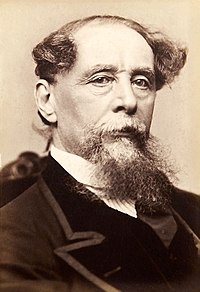 Charles John Huffam Dickens ( 7 February 1812 – 9 June 1870) was an English writer and social critic. He created some of the world's best-known fictional characters and is regarded by many as the greatest novelist of the Victorian era. His works enjoyed unprecedented popularity during his lifetime, and by the twentieth century critics and scholars had recognised him as a literary genius. His novels and short stories enjoy lasting popularity.
Charles John Huffam Dickens ( 7 February 1812 – 9 June 1870) was an English writer and social critic. He created some of the world's best-known fictional characters and is regarded by many as the greatest novelist of the Victorian era. His works enjoyed unprecedented popularity during his lifetime, and by the twentieth century critics and scholars had recognised him as a literary genius. His novels and short stories enjoy lasting popularity.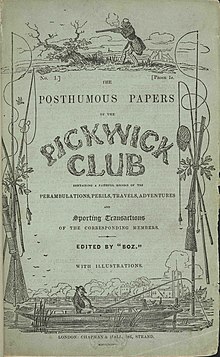 Dickens's literary success began with the 1836 serial publication of The Pickwick Papers. Within a few years he had become an international literary celebrity, famous for his humor, satire, and keen observation of character and society. His novels, most published in monthly or weekly installments, pioneered the serial publication of narrative fiction, which became the dominant Victorian mode for novel publication. The installment format allowed Dickens to evaluate his audience's reaction, and he often modified his plot and character development based on such feedback. Dickens improved the character with positive features. His plots were carefully constructed, and he often wove elements from topical events into his narratives Masses of the illiterate poor chipped in ha'pennies to have each new monthly episode read to them, opening up and inspiring a new class of readers.
Dickens's literary success began with the 1836 serial publication of The Pickwick Papers. Within a few years he had become an international literary celebrity, famous for his humor, satire, and keen observation of character and society. His novels, most published in monthly or weekly installments, pioneered the serial publication of narrative fiction, which became the dominant Victorian mode for novel publication. The installment format allowed Dickens to evaluate his audience's reaction, and he often modified his plot and character development based on such feedback. Dickens improved the character with positive features. His plots were carefully constructed, and he often wove elements from topical events into his narratives Masses of the illiterate poor chipped in ha'pennies to have each new monthly episode read to them, opening up and inspiring a new class of readers.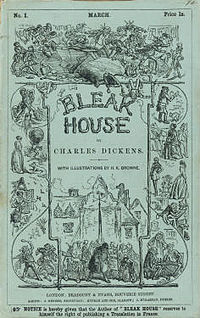

A Christmas Carol, is a novella by Charles Dickens, first published in London by Chapman & Hall in 1843. A Christmas Carol tells the story of Ebenezer Scrooge, an old miser who is visited by the ghost of his former business partner Jacob Marley and the Ghosts of Christmas Past, Present and Yet to Come. After their visits Scrooge is transformed into a kinder, gentler man.
Dickens wrote A Christmas Carol at a time when the British were examining and exploring Christmas traditions from the past, such as carols, as well as new customs such as Christmas trees. He was influenced by experiences from his own past, and from the Christmas stories of other authors, including Washington Irving and Douglas Jerrold. Dickens had written three Christmas stories prior to the novella, and was inspired to write the story following a visit to the Field Lane Ragged school, one of several establishments for London's half-starved, illiterate street children. The treatment of the poor and the ability of self-interested man redeeming himself by transforming into a more sympathetic character are the key themes of the story. There is discussion among academics as to whether this was a fully secular story, or if it is a Christian allegory.
A Tale of Two Cities (1859) is a novel by Charles Dickens, set in London and Paris before and during the French Revolution. The novel depicts the plight of the French peasantry demoralized by the French aristocracy in the years leading up to the revolution, the corresponding brutality demonstrated by the revolutionaries toward the former aristocrats in the early years of the revolution, and many unflattering social parallels with life in London during the same period.
4.Chivalric romance
romance or chivalric romance is a type of prose and verse narrative that was popular in the aristocratic circles of High Medieval and Early Modern Europe. They were fantastic stories about marvel-filled adventures, often of a knight-errant portrayed as having heroic qualities, who goes on a quest, yet it is "the emphasis on love and courtly manners distinguishes it from the chanson de geste and other kinds of epic, in which masculine military heroism predominates.
"Popular literature also drew on themes of romance, but with ironic, satiric or burlesque intent. Romances reworked legends, fairy tales, and history to suit the readers' and hearers' tastes, but by c. 1600 they were out of fashion, and Miguel de Cervantes famously burlesqued them in his novel Don Quixote. Still, the modern image of "medieval" is more influenced by the romance than by any other medieval genre, and the word medieval evokes knights, distressed damsels, dragons, and other romantic tropes.
Aldous Leonard Huxley ( 26 July 1894 – 22 November 1963) was an English writer, novelist, philosopher, and prominent member of the Huxley family. He graduated from Balliol College at the University of Oxford with a first-class honours in English literature.Huxley was a humanist, pacifist, and satirist. He later became interested in spiritual subjects such as parapsychology and philosophical mysticism,in particular universalism. By the end of his life, Huxley was widely acknowledged as one of the pre-eminent intellectuals of his time. He was nominated for the Nobel Prize in Literature in seven different years
 Brave New World is a novel written in 1931 by Aldous Huxley, and published in 1932. Set in London in the year AD 2540 (632 A.F.—"After Ford"—in the book), the novel anticipates developments in reproductive technology, sleep-learning, psychological manipulation, and classical conditioning that combine profoundly to change society. Huxley answered this book with a reassessment in an essay, Brave New World Revisited (1958), and with Island (1962), his final novel.
Brave New World is a novel written in 1931 by Aldous Huxley, and published in 1932. Set in London in the year AD 2540 (632 A.F.—"After Ford"—in the book), the novel anticipates developments in reproductive technology, sleep-learning, psychological manipulation, and classical conditioning that combine profoundly to change society. Huxley answered this book with a reassessment in an essay, Brave New World Revisited (1958), and with Island (1962), his final novel.
In 1999, the Modern Library ranked Brave New World fifth on its list of the 100 best English-language novels of the 20th century. In 2003, Robert McCrum writing for The Observer included Brave New World chronologically at number 53 in "the top 100 greatest novels of all time",and the novel was listed at number 87 on the BBC's survey The Big Read.
5.Movie
After directing The Rain People (1969), he co-wrote the 1970 film Patton, earning the Academy Award for Best Original Screenplay along with co-writer Edmund H. North. His directorial prominence was cemented with the release in 1972 of The Godfather, a film which revolutionized movie-making in the gangster genre,earning praise from both critics and the public before winning three Academy Awards—including his second Oscar (Best Adapted Screenplay, with Mario Puzo), Best Picture, and his first nomination for Best Director.



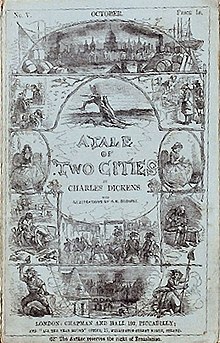

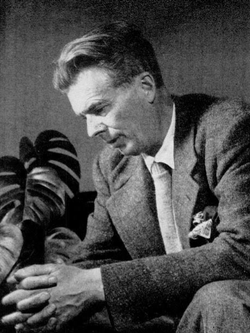


0 個意見:
張貼留言
訂閱 張貼留言 [Atom]
<< 首頁